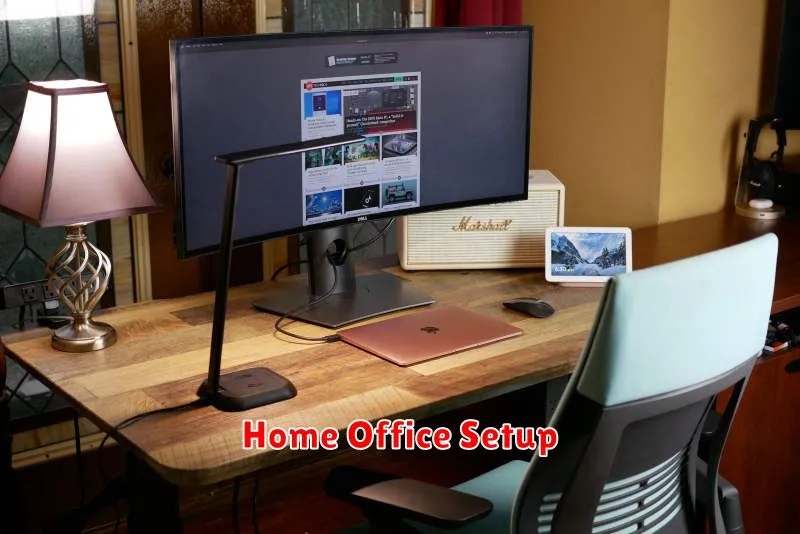Boost your productivity and transform your home into a thriving workspace with these 5 home office design ideas. Learn how to create a functional and inspiring environment that maximizes your efficiency, minimizes distractions, and fosters a positive work-from-home experience. Discover practical strategies for home office design that will enhance your focus and ultimately, elevate your work performance.
Ergonomic Desk Setup
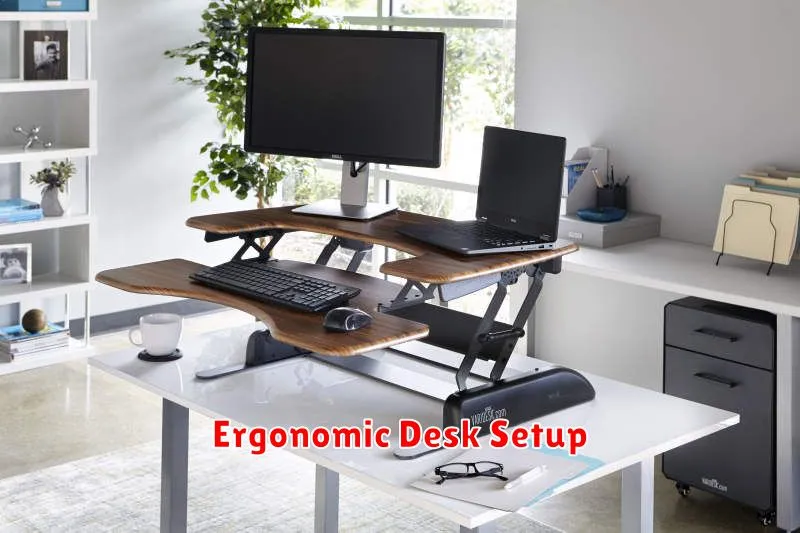
Establishing an ergonomic desk setup is crucial for maintaining good posture, preventing discomfort, and maximizing productivity. A well-designed workspace minimizes strain on your body, promoting overall health and well-being.
The foundation of an ergonomic setup is your chair. Choose a chair with adjustable height, lumbar support, and armrests that allow your elbows to rest at a 90-degree angle. Ensure the chair supports your lower back’s natural curve. Proper posture involves sitting upright with your feet flat on the floor.
Your monitor placement is equally important. The top of the screen should be at or slightly below eye level to prevent neck strain. Position the monitor an arm’s length away to reduce eye strain. Consider using a monitor stand to achieve the optimal height and viewing angle.
Keyboard and mouse placement should allow for neutral wrist positions. Avoid bending your wrists excessively. Consider using an ergonomic keyboard and mouse designed to promote natural hand and wrist alignment. Ensure your keyboard and mouse are within easy reach to minimize unnecessary reaching and stretching.
Lighting plays a significant role in ergonomic comfort. Ensure adequate lighting to minimize eye strain and reduce glare from the monitor. Consider using a task lamp to supplement overhead lighting. Natural light is beneficial, but direct sunlight should be avoided.
Finally, taking regular breaks is essential. Get up and move around every 30-60 minutes to stretch your muscles and improve blood circulation. Consider using a standing desk converter or a treadmill desk to incorporate more movement into your workday.
By incorporating these ergonomic principles into your workspace, you can significantly reduce the risk of musculoskeletal disorders and create a more comfortable and productive work environment. Regularly assess and adjust your setup to accommodate your individual needs and preferences.
Minimalist Workstation

A minimalist workstation prioritizes functionality and efficiency, eliminating clutter and distractions to foster a more productive and calming work environment. This approach focuses on essential tools and a clean aesthetic, contributing to improved focus and mental well-being.
Key elements of a minimalist workstation include a decluttered desk, organized storage solutions, and a limited selection of high-quality tools. This intentional curation ensures that only necessary items are readily accessible, minimizing visual noise and promoting concentration.
Benefits extend beyond aesthetics. A minimalist setup reduces decision fatigue by minimizing choices, allowing for streamlined workflows and quicker task completion. The calming effect of a clean workspace can also reduce stress and improve overall productivity.
Implementation involves a strategic decluttering process, identifying and removing unnecessary items. Prioritizing ergonomic considerations, such as proper posture support and adequate lighting, is crucial for maintaining comfort and well-being throughout the workday. Investing in high-quality, durable equipment that aligns with individual needs is key to long-term satisfaction and efficiency.
In conclusion, a minimalist workstation is more than just an aesthetically pleasing workspace; it’s a strategic approach to enhance productivity, reduce stress, and create a more focused and enjoyable work experience. By intentionally curating a clean and functional environment, individuals can significantly improve their overall work performance and well-being.
Lighting for Focus and Comfort
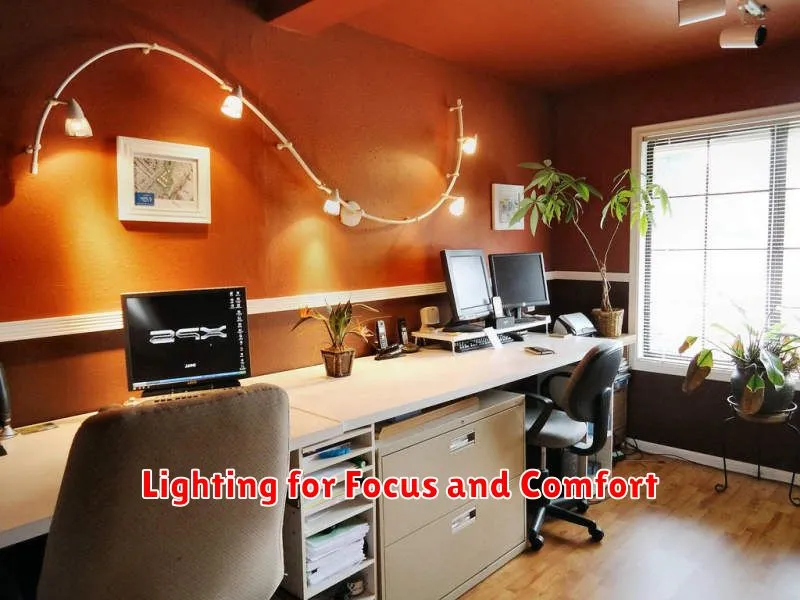
Effective lighting is crucial for both focus and comfort, impacting productivity and overall well-being. The right lighting design considers various factors to create an optimal environment.
Ambient lighting provides general illumination, setting the overall mood and brightness of a space. It’s essential to avoid overly bright or dim ambient lighting, aiming for a comfortable level that doesn’t strain the eyes. Natural light, when available, is always preferred.
Task lighting is specifically designed to illuminate work surfaces, reducing eye strain and improving concentration. This could include desk lamps, overhead spotlights, or even strategically placed floor lamps, depending on the task and workspace.
Accent lighting adds depth and visual interest to a room. It’s often used to highlight architectural features or artwork, creating a more engaging and aesthetically pleasing environment. However, it’s important to ensure that accent lighting doesn’t compete with task or ambient lighting.
The color temperature of light sources is another critical aspect. Cooler light (higher Kelvin values) is more stimulating and ideal for workspaces, whereas warmer light (lower Kelvin values) is more relaxing and suitable for relaxation areas.
Finally, consider the intensity of light. Avoid harsh, glaring light that can cause headaches and fatigue. Instead, opt for soft, diffused light that minimizes shadows and creates a comfortable atmosphere.
By carefully considering these factors—ambient, task, and accent lighting; color temperature; and intensity—you can create a lighting scheme that enhances both focus and comfort, leading to increased productivity and a more pleasant environment.
Smart Storage Solutions
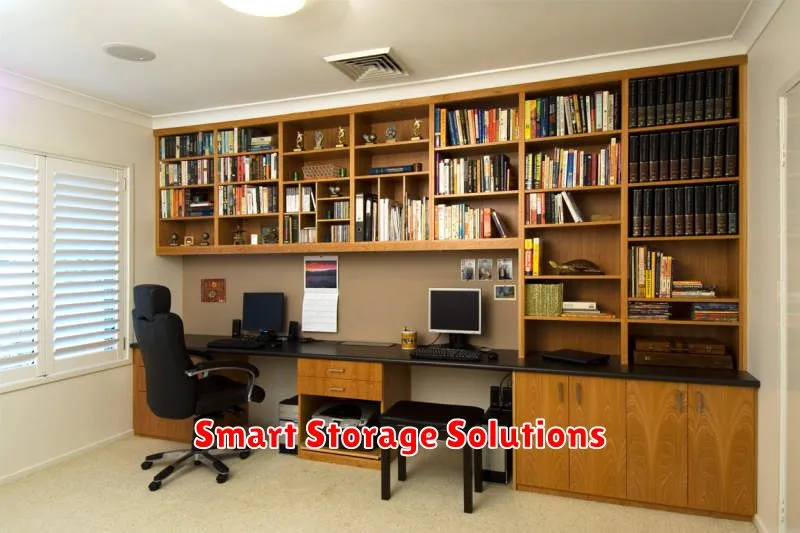
Smart storage solutions are revolutionizing how we manage and utilize space, offering innovative ways to maximize efficiency and minimize clutter. These solutions leverage technology and thoughtful design to create organized and accessible storage environments.
One key aspect of smart storage is its adaptability. Modular systems allow for customization based on individual needs and changing circumstances. This flexibility is crucial in homes and workplaces where storage requirements often evolve.
Space optimization is another significant benefit. Smart storage solutions often incorporate features such as vertical storage, retractable units, and multi-functional furniture, all aimed at maximizing the usable space within a given area. This is especially valuable in smaller spaces or areas with limited storage capacity.
Technological advancements are driving the development of even more sophisticated smart storage solutions. Integrated sensors and smart home technology can provide real-time inventory tracking, automated organization features, and remote access and control of storage units. This enhances convenience and improves overall management.
Sustainability is also becoming increasingly important in the design and manufacture of smart storage solutions. The use of eco-friendly materials and energy-efficient designs are contributing to a more environmentally responsible approach to storage management.
In conclusion, smart storage solutions offer a comprehensive approach to managing space, encompassing efficient design, adaptable systems, and the integration of technology to enhance convenience and sustainability. They represent a significant advancement in how we approach storage challenges, offering practical and innovative answers for a wide range of applications.
Incorporating Greenery for Relaxation
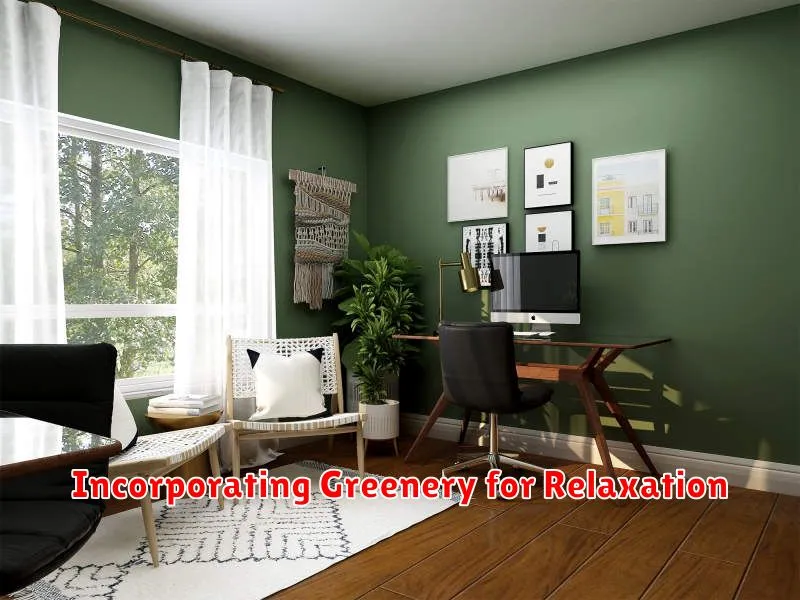
Incorporating greenery into your living space is a fantastic way to boost your mood and promote relaxation. Studies have shown that exposure to nature, even in small doses, can significantly reduce stress levels and improve overall well-being.
There are many ways to achieve this. For those with limited space, low-maintenance houseplants are an excellent option. Consider plants like snake plants, ZZ plants, or pothos, known for their resilience and ability to thrive in various light conditions. These require minimal care, making them ideal for busy individuals.
If you have more space, larger potted plants or even a small indoor herb garden can create a calming atmosphere. The visual appeal of lush greenery is inherently relaxing, and the gentle sounds of rustling leaves can add to the tranquil ambiance.
Beyond plants, incorporating natural materials like wood and stone can complement the greenery, creating a more holistic and calming environment. Think wooden furniture, stone accents, or even natural fiber rugs.
Remember to choose plants that are appropriate for the lighting conditions in your home. Proper lighting is crucial for plant health and will ensure your greenery thrives, contributing to a more relaxing and aesthetically pleasing space.
Finally, don’t underestimate the power of regular maintenance. Taking care of your plants, whether it’s watering, pruning, or repotting, can be a meditative practice itself, fostering a sense of calm and connection with nature.

